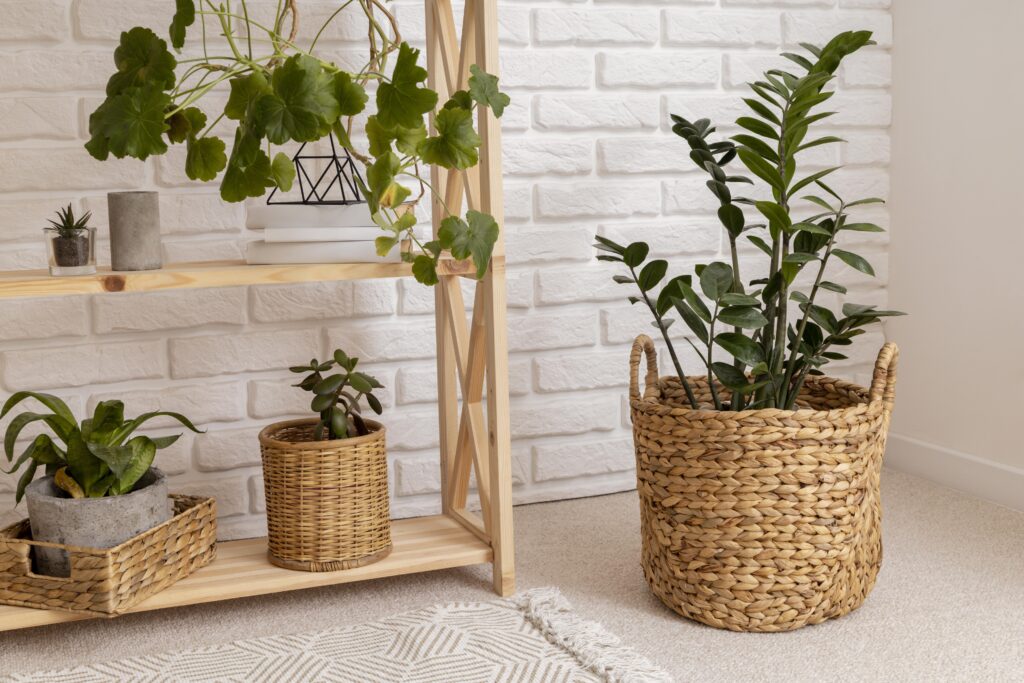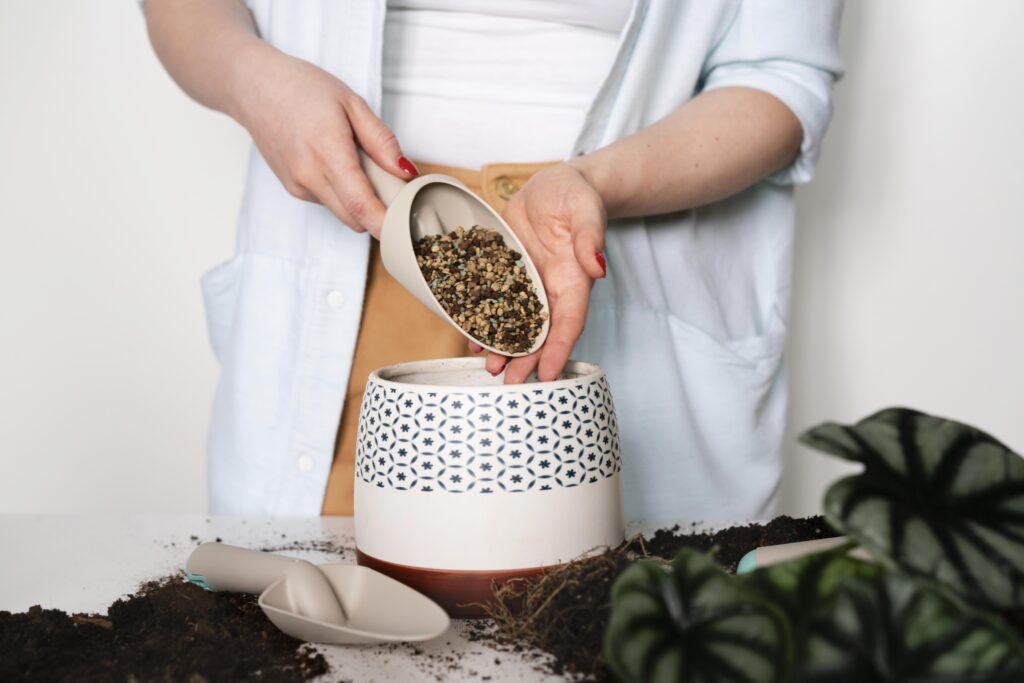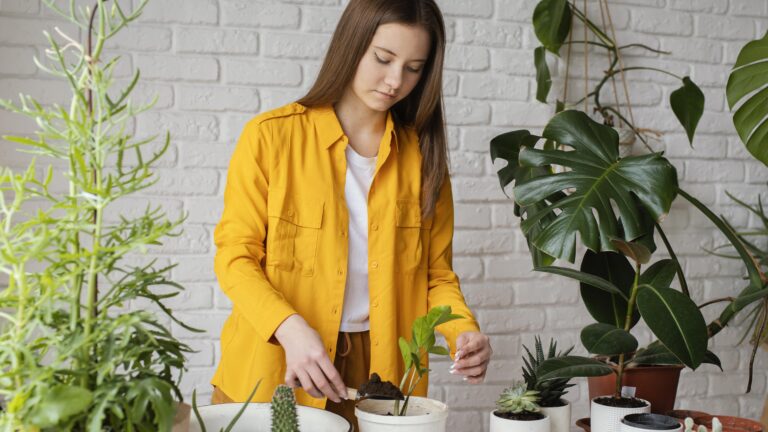Contents
Introduction
When it comes to keeping apartment plants happy and healthy, one of the most important things to get right is the soil. You might think that any old dirt will do, but choosing the right soil is actually a big deal. The type of soil you use can make a huge difference in how your plants grow, how often you need to water them, and even how long they’ll live.
So, why is soil so important? Well, think of soil as your plant’s home. Just like you need a comfortable place to live, plants need the right kind of soil to thrive. Good soil provides the essential nutrients, drainage, and support that plants need to develop strong roots and stay healthy. If you get it wrong, you might end up with droopy leaves, root rot, or even a plant that’s just plain not happy.
In an apartment, where space and natural light might be limited, choosing the right soil becomes even more crucial. Different plants have different needs, and not all soil is created equal. Some plants love a lot of water and need soil that can hold moisture, while others prefer a drier environment and need soil that drains quickly.
So, how do you figure out what your plant needs? Don’t worry—it’s not as complicated as it sounds. In this guide, we’ll break down the different types of soil you might come across, and how to pick the best one for your green friends. Whether you’re growing lush houseplants, vibrant succulents, or even starting seeds, we’ve got you covered. By the end, you’ll be able to make informed decisions about soil that will keep your apartment garden flourishing.
Let’s dig in and get started on making your indoor garden the best it can be!
Understanding Plant Needs
Before you rush out to buy soil for your apartment plants, it’s important to get to know what your plants really need. Just like you wouldn’t pick a home without considering your lifestyle, you shouldn’t choose soil without thinking about what your plants require. Let’s break down the key factors that will help you pick the perfect soil mix for your leafy friends.
Light Requirements
First things first: light. The amount of light your plant gets can greatly influence its soil needs. If your apartment has lots of bright, direct sunlight, your plant will need soil that can handle more frequent watering. This is because the sun dries out the soil faster. On the other hand, if your plant is in a shadier spot, you’ll want a soil that retains moisture longer. Matching soil to light conditions helps keep your plant’s roots happy and healthy.
Watering Needs
Next up is watering. Different plants have different thirst levels. Some plants, like ferns and peace lilies, love a good drink and need soil that holds moisture well. This type of soil usually includes ingredients like peat moss or coconut coir that keep the water around the roots. Other plants, like succulents and cacti, prefer to stay on the dry side. For these guys, you’ll need soil that drains quickly to avoid soggy roots. Think sandy or gritty mixes that let excess water flow out easily.
Root System
The way a plant’s roots grow also plays a role in choosing soil. Plants with shallow roots, like many houseplants, need soil that’s light and airy to support their growth. This type of soil helps with good drainage and prevents roots from becoming compacted. Plants with deep root systems, like some small indoor trees, benefit from soil that provides stability and can hold a bit more moisture. Understanding your plant’s root habits helps you pick a soil that keeps the roots comfortable and growing strong.

By taking a closer look at these three factors—light, watering needs, and root system—you’ll be well on your way to choosing the right soil. It’s all about finding the perfect balance that matches your plant’s preferences and your apartment’s conditions. Keep these tips in mind, and your plants will thank you with vibrant growth and lots of green!
Types of Soil and Soil Mixes
When it comes to picking the right soil for your apartment plants, it’s not just about grabbing any old bag from the store. There are several different types of soil and soil mixes, each designed to meet specific needs. Knowing what’s out there will help you choose the best one for your leafy buddies. Let’s dive into the most common soil types and what makes each one special.
Potting Soil
Let’s start with the classic: potting soil. This is the go-to choice for most houseplants. Potting soil is a blend of organic materials like peat moss, compost, and perlite. It’s designed to be lightweight and provide good drainage while still retaining enough moisture to keep your plants hydrated. If you’re growing indoor plants like ferns, spider plants, or even small vegetables, potting soil is often your best bet. It’s versatile and works well for a wide range of plants.
Cactus and Succulent Mix
If you’re into growing cacti or succulents, you’ll need a special mix designed for these water-wise plants. Cactus and succulent soil mixes are much grittier and have excellent drainage. They often contain ingredients like sand, pumice, or crushed granite. This mix helps prevent overwatering, which is a common issue for these plants. If you’ve got a sunny spot with lots of light, this is the soil to use for keeping your spiky and fleshy friends happy.
Orchid Mix
Orchids are beautiful but have very specific soil needs. Orchid mix is quite different from regular potting soil. It usually contains large chunks of bark, charcoal, and sometimes coconut husk. This mix is designed to mimic the orchid’s natural habitat, where roots cling to trees and get plenty of air. It provides excellent drainage and allows air to circulate around the roots, which is crucial for keeping orchids healthy. If you’re growing orchids, look for a mix labeled specifically for them.
Seed Starting Mix
Planning to start your plants from seeds? You’ll need a seed starting mix. This type of soil is finely textured and designed to be light and sterile. It helps seeds germinate quickly and gives young seedlings a good start. Seed starting mixes are usually free from large particles and often contain ingredients like peat moss and vermiculite. Once your seedlings are big enough, you can transfer them to a more standard potting soil.

Hydroponic Media
For those who are into soilless growing, hydroponic media might be your thing. This type of soil isn’t really soil at all. Instead, it’s a mix of materials like rock wool, clay pellets, or perlite used in hydroponic systems. Hydroponic media supports plants and allows their roots to absorb nutrients from a liquid solution. If you’re interested in hydroponics or want to experiment with soilless growing, these media are perfect.
Understanding the differences between these soil types helps you choose the right one for your plants. Whether you’re nurturing houseplants, cultivating succulents, or starting seeds, there’s a soil mix out there that’s just right for your needs. Happy planting!
Soil Characteristics to Consider
Choosing the right soil for your apartment plants goes beyond just picking a type or mix. It’s important to understand the key characteristics of soil that can affect your plant’s health. Think of these characteristics as the qualities that make soil suitable for different kinds of plants. Let’s break down the essential factors you need to consider to keep your plants thriving.
Drainage
Drainage is one of the most critical aspects of soil. Good drainage ensures that excess water can escape from the pot, preventing water from pooling at the bottom and causing root rot. Think of it like this: if your plant’s soil holds onto too much water, it’s like having soggy socks—definitely not comfortable for the roots! Soil with good drainage usually contains materials like perlite, sand, or gravel, which help water flow through quickly. If you’re growing plants that like their roots dry, like succulents or cacti, drainage is key.
Aeration
Aeration refers to how well air circulates through the soil. Just like we need fresh air, plants need it too—especially their roots. Well-aerated soil allows roots to breathe and helps prevent issues like root rot. It also makes it easier for roots to spread out and grow. Soil that’s too dense or compacted can suffocate roots and hinder plant growth. Look for soil that includes ingredients like perlite or vermiculite, which help create air pockets and keep the soil light and fluffy.
Nutrient Content
Soil isn’t just a home for roots; it’s also a source of nutrients. Plants need a variety of nutrients to grow strong and healthy, including nitrogen, phosphorus, and potassium. Good quality potting soil usually comes with these nutrients already mixed in. However, some plants might need additional feeding or special soil amendments. If you’re growing plants that require extra nutrients or have specific needs, consider choosing a soil with added fertilizers or be prepared to supplement with plant food.
pH Level
pH level might sound technical, but it’s actually pretty straightforward. It measures how acidic or alkaline the soil is. Most plants prefer a slightly acidic to neutral pH, around 6 to 7. If the soil pH is off, your plant might struggle to absorb nutrients properly. You can buy a simple pH test kit to check your soil’s acidity. If adjustments are needed, you can amend the soil with materials like lime to raise the pH or sulfur to lower it. Choosing the right pH ensures your plant gets the nutrients it needs to thrive.
By paying attention to these soil characteristics—drainage, aeration, nutrient content, and pH level—you’ll be better equipped to choose the right soil for your apartment plants. It’s all about creating the perfect environment that supports healthy root growth and vibrant plant life. With a bit of knowledge and the right soil, your indoor garden will be looking fantastic in no time!
Tips for Choosing the Right Soil
Finding the perfect soil for your apartment plants can feel a bit overwhelming, but don’t worry—we’ve got you covered! With a few handy tips, you can make the process a lot simpler and ensure your plants get the best possible start. Let’s explore some practical advice to help you choose the right soil for your green companions.
Match Soil to Plant Type
One of the most important things to remember is to match the soil to the type of plant you’re growing. Different plants have different needs when it comes to soil. For example, succulents and cacti need a soil mix that drains quickly to avoid waterlogging, while ferns and peace lilies thrive in soil that retains moisture. Check your plant’s specific requirements before choosing soil. You’ll often find this information on the plant label or in care guides. Getting the right soil type means your plant gets the conditions it loves best.
Consider Pot Size
The size of your pot can also influence the type of soil you should use. Larger pots hold more soil, which means they can retain more moisture. If you’re using a big pot for a moisture-loving plant, make sure the soil can handle it without becoming waterlogged. Smaller pots dry out faster, so for these, you might need a soil that retains a bit more moisture to keep your plant happy. Consider the pot size when selecting soil to match your plant’s needs and keep it thriving.
Pre-mixed vs. DIY Soil
You’ll often find pre-mixed soils ready to go, but sometimes, making your own soil blend can be beneficial. Pre-mixed soils are convenient and specially formulated for different types of plants, but if you’re feeling adventurous, you can create your own mix. DIY soil blends allow you to customize the texture and drainage to suit your specific plant. For instance, you can mix potting soil with perlite or sand for improved drainage. Experimenting with different blends can be a fun way to get exactly what you need.
Environmental Impact
As you choose your soil, consider the environmental impact of your choices. Many soils are made from peat moss, which is not always sustainable. Look for eco-friendly options like soil mixes that use coconut coir instead of peat. Coconut coir is a byproduct of coconut processing and is a more sustainable choice. Choosing environmentally friendly products helps reduce your ecological footprint and supports more sustainable practices.
By following these tips—matching soil to plant type, considering pot size, exploring pre-mixed vs. DIY options, and thinking about the environmental impact—you’ll be well on your way to creating a thriving indoor garden. With the right soil, your plants will be set up for success and your apartment garden will flourish beautifully. Happy planting!
Common Mistakes and How to Avoid Them
Choosing the right soil for your apartment plants can be tricky, and it’s easy to make mistakes along the way. But don’t worry—learning from common pitfalls will help you make better choices and keep your plants in tip-top shape. Let’s take a look at some of the most frequent soil-related mistakes and how you can avoid them.
Using Garden Soil Indoors
One of the biggest mistakes people make is using garden soil for indoor plants. While garden soil might seem like a good idea because it’s readily available, it’s actually not ideal for indoor use. Garden soil can be too heavy, doesn’t drain well, and may contain pests or diseases that can harm your plants. Instead, opt for potting soil or a mix specifically designed for indoor plants. These soils are lighter, have better drainage, and are free from harmful bugs.
Overwatering and Soil Compaction
Another common issue is overwatering, often caused by soil that doesn’t drain well. If your soil retains too much moisture, it can lead to root rot and other problems. Soil compaction is another concern; when soil becomes too dense, it can suffocate the roots and prevent proper water and air flow. To avoid these issues, choose a soil mix with good drainage properties and avoid watering too frequently. It’s better to check the soil moisture before watering to ensure it’s needed.
Neglecting Soil Amendments
Sometimes, people forget that soil isn’t a one-time fix—it can need some adjustments over time. Plants use up nutrients from the soil, so it’s important to periodically amend the soil with compost or fertilizers to replenish those nutrients. Neglecting this can lead to nutrient deficiencies and poor plant health. Regularly check your plants for signs of nutrient deficiency and amend the soil as needed to keep your plants happy and growing strong.
Ignoring pH Levels
Soil pH might not be something you think about often, but it’s crucial for your plants’ health. If the pH level of your soil is off, plants can’t absorb nutrients properly, which can stunt their growth or cause other issues. Many potting soils are formulated to be pH balanced, but if you’re using other mixes or homemade soil, it’s worth checking the pH level. You can use a simple pH test kit to ensure your soil’s pH is in the right range for your plants.
By avoiding these common mistakes—using garden soil indoors, overwatering, neglecting soil amendments, and ignoring pH levels—you’ll set yourself up for a successful indoor garden. With a little attention to detail, you can keep your plants thriving and your apartment garden looking fantastic. Happy planting and keep those green thumbs working!
Conclusion
Choosing the right soil for your apartment plants is a crucial step in creating a thriving indoor garden. It might seem like a small detail, but the right soil can make all the difference in keeping your plants healthy and vibrant. Let’s recap the key points to keep in mind as you pick the perfect soil for your green friends.
First off, understanding your plant’s needs is essential. Light conditions, watering preferences, and root systems all play a role in determining the best soil. Whether your plant loves bright, sunny spots or thrives in low light, there’s a soil type that’s just right for it. Make sure to choose a soil that matches these needs to keep your plants happy.
Next, familiarize yourself with the different types of soil and soil mixes available. From classic potting soil to specialized mixes for succulents, orchids, and seeds, each type is designed to cater to specific plant requirements. Knowing what each mix offers helps you select the best option for your indoor garden.
Don’t forget to consider important soil characteristics like drainage, aeration, nutrient content, and pH levels. Good drainage prevents overwatering issues, while proper aeration helps roots breathe. Nutrients and pH levels ensure your plants get the food and conditions they need to grow strong. Pay attention to these factors to create the ideal environment for your plants.
Use the tips provided to match soil to plant types, think about pot size, and weigh the benefits of pre-mixed versus DIY soil options. Also, consider the environmental impact of your soil choices by opting for sustainable products when possible.
Avoid common mistakes like using garden soil indoors, overwatering, and neglecting soil amendments. Keeping these pitfalls in mind will help you maintain a healthy and thriving indoor garden.
In summary, with the right soil, you’re setting up your apartment plants for success. By understanding their needs, choosing the appropriate soil mix, and keeping an eye on soil characteristics, you’ll be well on your way to enjoying a lush and vibrant indoor garden. Happy planting, and may your apartment garden flourish!



